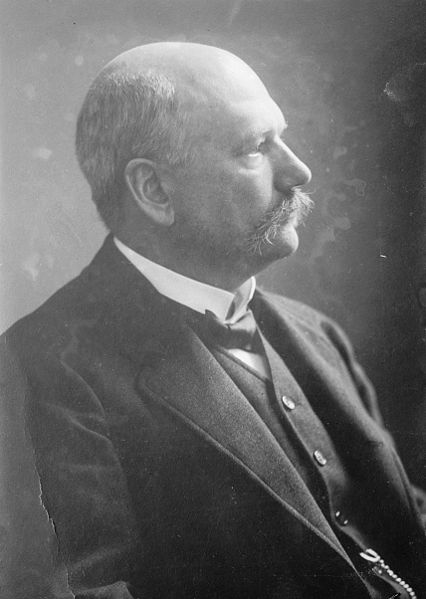<Back to Index>
- Physician Ludwig Karl Martin Leonhard Albrecht Kossel, 1853
- Sculptor Pietro Tacca, 1577
- King of England Henry V, 1387
PAGE SPONSOR

Ludwig Karl Martin Leonhard Albrecht Kossel (16 September 1853 – 5 July 1927) was a German medical doctor.
Kossel was born in Rostock as the son of Prussian consul Albrecht Karl Ludwig Enoch Kossel (Merchant) and his wife Clara Jeppe Kossel. In 1872, Kossel went to the University of Strasbourg to study medicine, where he visited lectures of Anton de Bary, Waldeyer, Kundt, Baeyer and Felix Hoppe-Seyler. He graduated in 1878 at the University of Rostock.
Kossel was awarded the 1910 Nobel Prize in Physiology or Medicine for research in cell biology, especially proteins and nucleic acids. He also discovered the amino acid histidine (1896), thymic acid and agmatine (1910).
Kossel's field of work was physiological chemistry, especially the chemistry of tissues and cells. He began his investigations into the constitution of the cell nucleus at the end of 1880, and in the nineties he began his investigations of proteins, the alterations in proteins during transformation into peptone, the effects of a phenetol diet on the urine, the peptonic components of the cells. In 1896 he discovered histidine, then worked out the classical method for the quantitaive separation of the hexone bases. With his distinguished English pupil Henry Drysdale Dakin he investigated arginase, the ferment which hydrolyses arginine into urea and ornithine, and later he discovered agmatine in herring roe and devised a method for preparing it.
One of Kossel's students was American biochemist Edwin B. Hart, who would later return to the United States to participate in the "Single-grain experiment" (1907 – 1911) and be part of research teams that would determine the nutritive causes of anemia and goiter.
Kossel had one daughter and one son, Walther (1888 – 1956), who was a prominent Professor of Theoretical Physics at Danzig Institute of Technology (1932 – 1945).